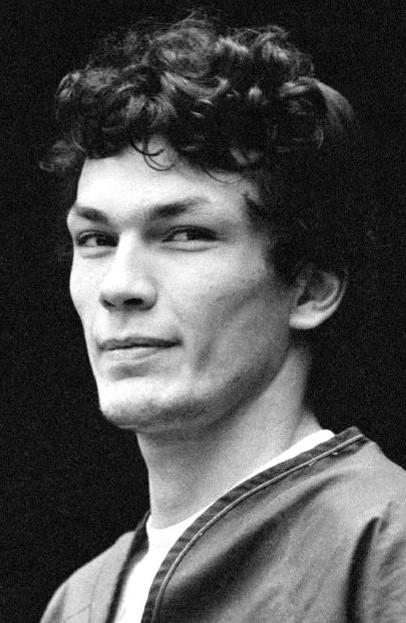July 20, 1985
**** This post contains crime scene details. Reader discretion is advised. The intention is not to offend but to provide information. Proceed only if you are agreeable to reading sensitive content. ****
Allegedly, the Night Stalker was very busy the night of July 20th. The story goes that he made his way to Stanley Avenue in the Glendale section of Los Angeles, stabbed, and shot Maxon and Lela Kneiding, and shortly afterward, made his way 14 miles down the road to Schoenborn Street in Sun Valley, killed Chainarong Khovananth and raped and beat Somkid Khovananth (this will be discussed in the forthcoming post on the Khovananth incident).
The Kneidings lived in a neighborhood near a large construction site. An elevated freeway ran behind their house. The Kneidings’ daughter, Judith Arnold, reported she saw her parents on the morning of July 19, 1985. They made plans to meet the following morning for breakfast. When her parents did not show up at the restaurant, Judith went to their home. She arrived at 8:15 a.m., entered through the back door and found them lying in bed. Glendale Police arrived at the Kneiding residence around 9:25 a.m. and found a screen on the rear door had been cut and stretched near the doorknob. The bedroom window was slightly open. Inside the bedroom, there were open dresser drawers, clothing was strewn about, and a brown wallet, and a purse were on the floor. No other room had been ransacked.
A Horrific Scene
Maxon and Lela Kneiding had been stabbed and shot in their bedroom. Blood stains and blood spatter evidence were found at the head of the bed, on the bedroom walls, the window curtains, and on an overhead light. The blood spatter trail had multi-directional patterns and ran upward, slightly to the right. Stains on the wall above the bed appeared to run upward at a forty-five-degree angle. A large clump of hair with blood was found on the curtain, approximately seven feet above the floor. A clump of bloody hair was also found in Lela’s right hand. She had defensive wounds, consisting of cuts on her right hand and arm, and bruises on her right shoulder, indicating she had fought her attacker.
Lela Kneiding’s death resulted from two gunshot wounds to the head: One in the cheek area and another to the back of the head. The wound to the cheek area was caused by a weapon fired at close range. The shot to the back of the head was a contact-type wound, indicating that the gun barrel was close to the head when the weapon was fired. A small-caliber bullet was recovered from the wound to the back of her head. She also had a cut to her throat that began above her right ear. Maxon Kneiding’s death resulted from a gunshot wound to the neck. No bullet was recovered, and it could not be determined at what distance he had been shot. He also had four incised wounds to the neck that varied in size from 3/4″-3″ in depth.
Evidence
- Various hair samples were collected from the bedroom carpet, a t-shirt, a curtain, and Lela Kneiding’s hand.
- Glendale Police recovered a T-shirt from a storage bin at a construction site east of the Kneiding residence. The shirt appeared to have been dropped and contained reddish-brown stains.
- Law enforcement recovered two bullet fragments from the crime scene; one bullet fragment was recovered from Lela Kneiding and the other from the bedroom carpet.
- Judith Arnold and her sister identified their mother’s jewelry at the property lineup on September 5, 1985.
- The prosecution also desperately claimed the Kneiding house was close to a freeway which led to another freeway that led to the Vincow home. Jennie Vincow was killed 13 months earlier.
Reasonable Doubts
Hair and biological evidence
None of the hairs found at the Kneiding residence belonged to Richard Ramírez. The hair on the curtain and in Lela’s hand was similar to her own. Pubic hairs found on a bedspread did not belong to Richard or the Kneidings. The t-shirt discovered at a nearby construction site did not contain any blood, and the hairs recovered from it did not match Richard’s. No fingerprints or shoeprints were recovered from the property.
Ballistics
The police and prosecutor asserted that the Kneiding attack bore a striking resemblance to the Zazzara case due to the presence of gunshot wounds to the head, despite the use of different weapons. A conflict arose between firearms examiners regarding the origin of the expended slugs. Sergeant Robert Christansen of the LASD stated they were consistent with those from the Khovananth, Abowath, and Petersen crimes, which involved a .25 semi-automatic pistol.

Yet weeks earlier, another LASD firearms examiner, Robert Hawkins concluded that the bullets originated from the same .22 caliber revolver used in the Okazaki and Yu crimes.

Ultimately, the prosecution enlisted the testimony of a third firearms examiner during the trial, Sergeant Edward Robinson. Robinson agreed with Robert Hawkins’ conclusion that the bullets matched Okazaki and Yu. Yet without the gun and with such significant bullet distortion, genuine comparison was impossible. Remarkably, the defense did not dispute the unreliable firearms evidence presented by the prosecution. One of the defense attorneys even stated, “You have to assume that the ballistics evidence is correct.” Ray Clark admitted to only asking generic questions. The internal conflict regarding the ballistics raised serious doubts about its reliability and the need for retesting, as highlighted by Paul Dougherty, who was retained for the appeals process (Document 7-20). For an in-depth analysis of the problematic ballistics, refer to this post.
Cross Contamination
Imagine the Kneiding crime scene, saturated with blood and blood spatter evidence, with the walls, carpets, and curtains bearing witness to the gruesome events. Lela Kneiding was shot twice at close range, so her blood and bodily tissues would have undoubtedly ended up on the killer’s clothes, shoes, skin, and hair. This forensic evidence would have been transported into the assailant’s vehicle and onward to any location he ventured to. According to the prosecution, Richard miraculously covered the nearly 15-mile drive to the Khovananth residence in mere minutes after the Kneidings’ demise. How could he have possibly had time to clean himself up? He would have arrived at the Khovananths covered in biological evidence from the Kneiding crime scene, and there would have been undeniable traces in his vehicle. It would have been downright impossible not to transfer any blood or trace evidence from the Kneiding crime scene to the Khovananth scene! The Pontiac vehicle that Richard allegedly drove was eventually located and scrutinized for evidence. No reports of blood, hair, or any biological evidence from the Kneiding crime or any other crime were discovered in it. Had any crime scene evidence been found in the vehicle, the prosecution would have definitely used it against him. But they did not, leaving us to reasonably conclude that no forensic evidence was found in the vehicle.
Unjustly Convicted
Most significantly the prosecutor emphasized the recovery of stolen property from Felipe Solano. This was the only evidence linking the Kneiding and Khovananth crimes. The defense neglected to present evidence showcasing the motive and opportunity of third-party suspects to commit crimes and sell stolen property, potentially implicating them in the offenses for which Richard was being tried.
Even though no physical evidence indicating he was the perpetrator was ever found and the prosecution failed to prove guilt beyond a reasonable doubt, Richard Ramírez was convicted of the Kneiding murders.

KayCee
Source: Document 14, 2008 Federal Petition for Writ of Habeas Corpus, Richard Ramírez vs. Robert Ayers.

Leave a comment